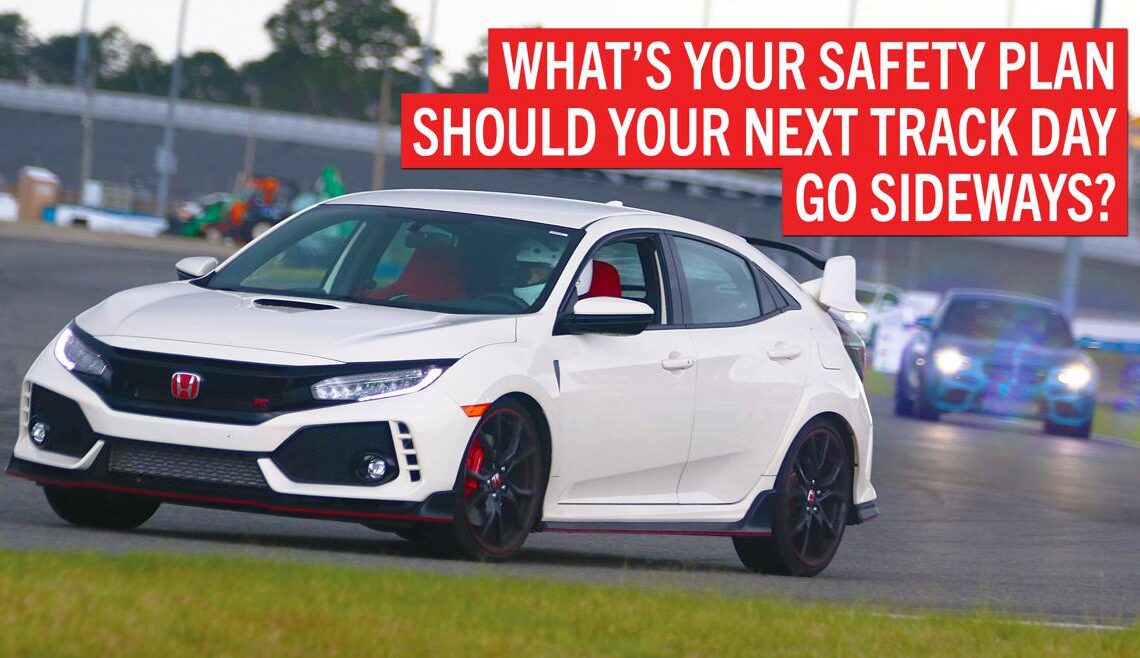After a good friend successfully survived a major fire during a high-profile race, he dropped a tidbit of knowledge that has lived rent-free in our brains ever since: “Fire burns just as hot on a test day as on race day.”
Head First: Do You Even Have the Right Helmet?
The helmet is a crucial piece of any kit, so our recommendation here is a rigid one: Buy a Snell SA-rated helmet of the current generation or no more than one generation out of date. Nearly all track sanctioning bodies allow Snell SA helmets that are one or even two generations old, so this guideline is rooted in both theory and practice.
Buying an out-of-date helmet can sometimes save you a few bucks, but that savings never seems to make up for the lack of approved lifespan. So always favor newer–unless the deal is just too good to be true.
Joe Marko, owner of motorsports supply house HMS Motorsport, backs us up on our helmet philosophy while providing some additional insight. “A helmet at any price level with a Snell rating is going to have the same protection against impact as any other helmet with that same rating,” Marko explains, “so that’s reassuring if you’re on a budget.
“But what you get when you spend more money is usually a more comfortable helmet with more custom fitting options and, most importantly, less weight. And that mass attached to your neck can really come into play from a safety perspective in a crash. A heavier helmet is going to have more inertia than a light helmet, so keep that in mind.”
We also recommend a full-face helmet over an open one. The shield against debris, insects, moisture and other potential hazards make a full-face helmet a worthwhile purchase. Plus, face protection in the event of air bag deployment is a nice bonus, particularly since so many cars on track are equipped with air bags.
Marko has overseen some air bag testing using helmeted drivers, and some of the results were surprising. “One thing that stood out was that a sun visor or an open visor on a full-face helmet gives the air bag an additional point of leverage against your head. So best practice in a car with air bags is a full-face helmet with the visor down and locked, or removed.”
But removal has its risks. Marko recounts an incident at VIR where “a car went passenger side into a wall, and the side mirror broke off, came through the window and…
Click Here to Read the Full Original Article at Grassroots Motorsports Online Articles…

